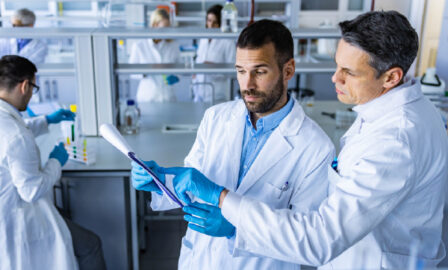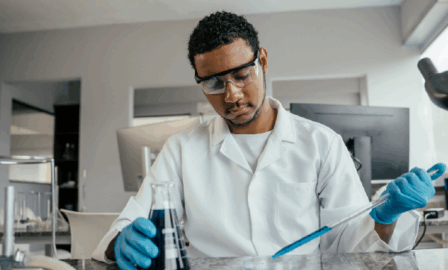Leveraging a LIMS Solution for Cell and Gene Therapy Data Management
Research in CGT (cell and gene therapy) involves patient care and instrumentation information, which makes data in this sector intensive. The rapid growth in data is making the tracking and processing of information difficult using manual techniques. In this piece, we dive into the considerations for effective cell and gene therapy data management with LIMS.
How Can LIMS Help with Data Management and Storage?
LIMS (Laboratory Information Management System) in CGT needs to have instrument interfacing in place to process data from qPCRs (quantitative polymerase chain reaction), LCMS (liquid chromatography mass spectrometry), and other types of instruments quickly and efficiently. The biobanking module of several LIMS products available today allows for samples to be uploaded and accessioned quickly by use of an automated manifest, or sample matrix, to include valuable sample metadata, such as non-identifiable subject information, sample type, laterality, treatments, and preparation types. These samples then can belong to a study that contains one-to-many different sample types, subjects, clinical events, and clinical sites where data masking can occur if needed. LIMS also can pool samples or split them into aliquots for further research and development.
Integrating LIMS and CGT Process Analytics Solutions
Cell and gene therapy data management often comes in the form of raw big data that needs to be analyzed by scientists quickly, often called a data lake. Analytics software, partnered with LabVantage but compatible with other LIMS systems, can be a key player in analyzing this data quickly and seamlessly. This software works by sitting on top of the LIMS platform to give a seamless solution to analyze and explore data immediately. Visualization of the data can be seen through charts and calibration curves, including the ability to perform multiplexing where two genes are amplified and analyzed using qPCR.
The Analytics solution can also perform calculations for trending and determining criteria for acceptable results from an instrument or manual raw data. Once the calculations are run, the final output can then be written back to LIMS for reporting. Analytics has the security, compliance, and data integrity found in a LIMS system because of the seamless integration. Additionally, the analytics solution uses machine learning and artificial intelligence to predict potential issues before they happen, saving cost, time, and waste.
As with other sterile manufacturing of biopharmaceuticals, these therapies require intricate production processes that must be carried out in a cleanroom environment that adheres to ISO Class 5 or Class 6 standards. LIMS can be configured to support environmental monitoring of these cleanrooms and other areas of production, including air, water, surface, and personnel. Whether a business does testing in-house or uses a contract laboratory, the system can provide automated alerts for sampling and testing as well as provide efficient and accurate trending and reporting. LIMS helps provide peace of mind that the proper testing has been done to ensure the areas are clean and sterile.
Cell and Gene Therapy Data Management: LIMS
The CGT market is growing tremendously in therapeutics and is the center of healthcare innovation, expecting a six-fold increase by the year 2030. The therapies are providing a cure as opposed to ongoing treatments; therefore, the amount of data to develop these therapies is exponential. As the market grows, companies should prepare for analyzing the data to keep costs lower, minimize waste, and improve overall efficiencies – implementing a robust LIMS solution can help.
To improve your cell and gene therapy data management, reach out to us to learn more about our LIMS consulting or CGT consulting services here.
Subscribe to Clarkston's Insights



